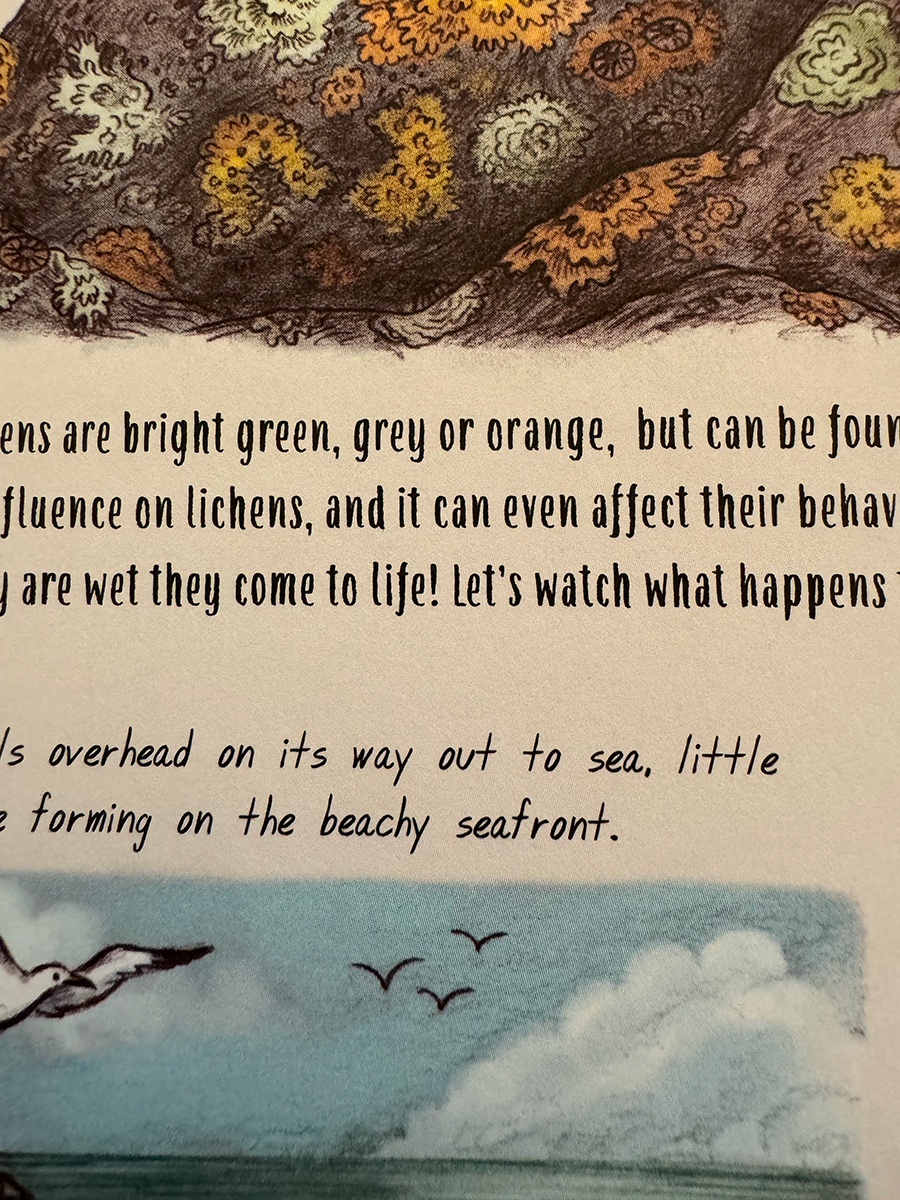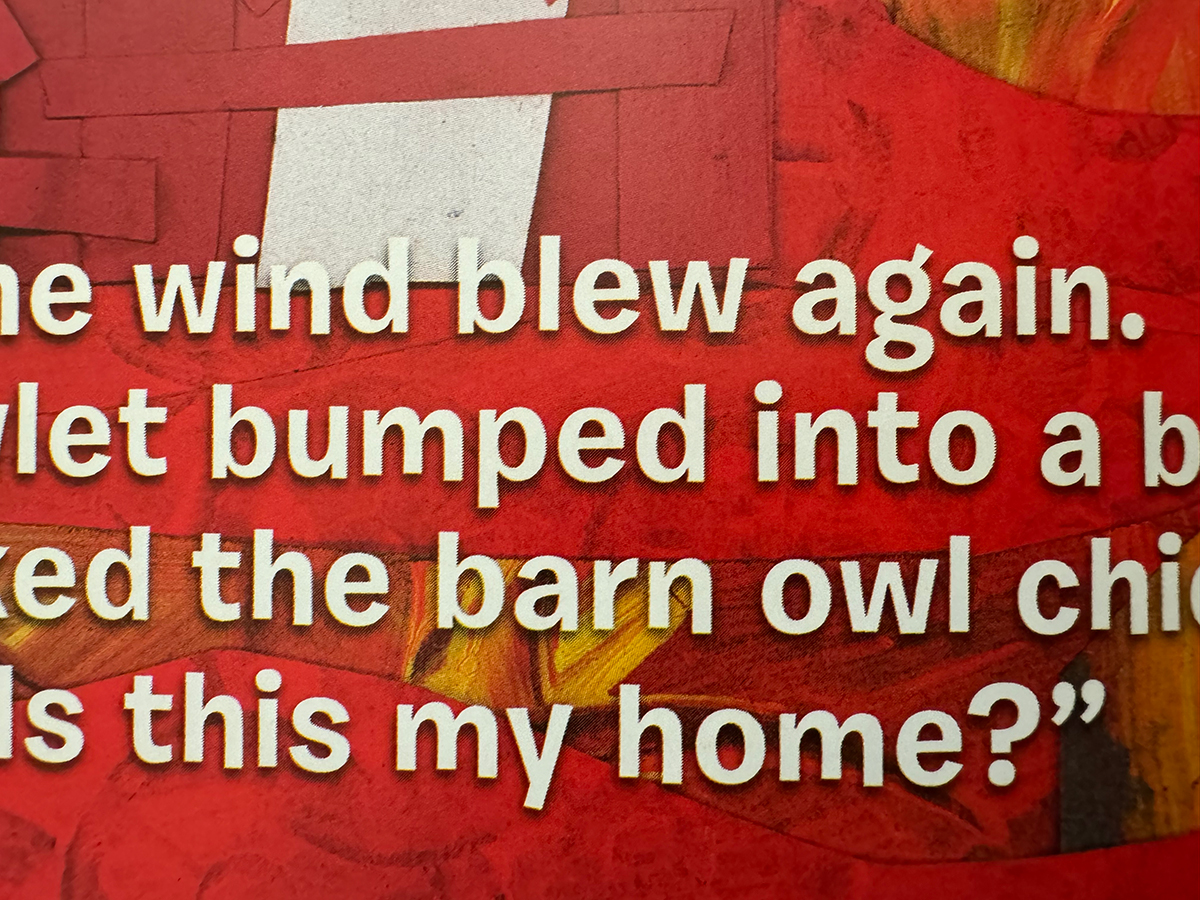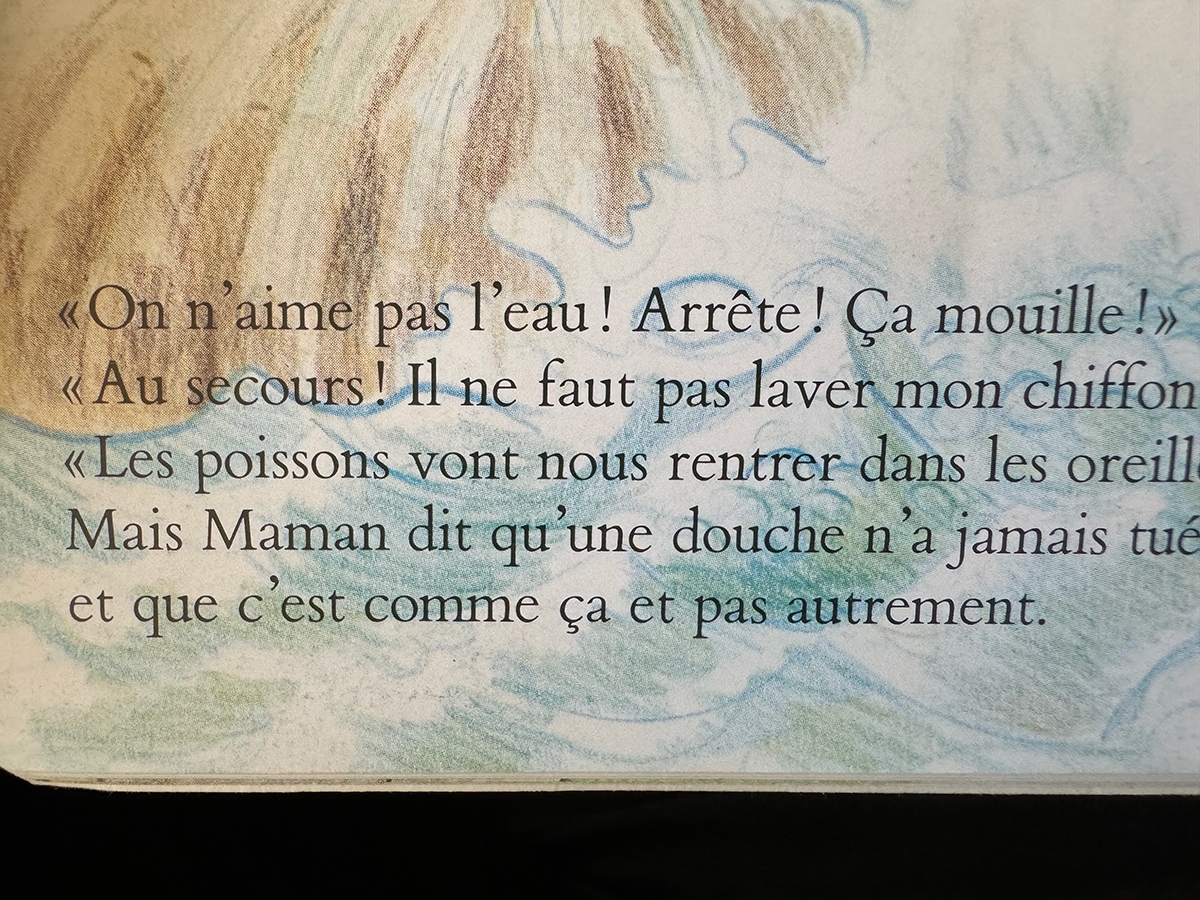If you’re an author, or an aspiring author, odds are you have at very least heard the term “book formatting”. Book formatting is essentially the layout, design and overall visual look of your book. And it is probably the most frequent thing I see lacking in the world of independent authors. In author groups, it seems everyone knows they need a good cover (although some don’t realize DIY is not always best) and if you have a picture book, you need an illustrator. I’d say a lot also realize the importance of an editor. However, the piece I see people mention the least is a designer. So why is that?
It seems to me that these are the most likely reasons people don’t think about hiring a designer:
- For children’s picture book authors, they think their illustrator will do this (and some may, but they may not be trained for it)
- For novels, they think it’s just plopping the text into Word and voila!
- They take matters into their own hands and just do it on their own, because “it can’t be that hard, right?”
But the truth is, the design of your book is VERY IMPORTANT! It should not be an afterthought, or put last behind everything else. Here are some examples of what I’ve seen in self-published books where they didn’t hire a designer, or maybe hired a designer lacking experience:
Children’s Picture Books’ Design Flaws
- Text that is hard to read because it’s too dark or too light, or not enough contrast
- Text in odd places that make the story hard to follow or disrupt the natural flow of the book
- Fonts that are difficult to read, cheap looking, and/or don’t fit the style of the book
- Images that don’t bleed appropriately
- Images that come out too dark or too dull because the color profile wasn’t considered
- Images that have poor resolution
- A cover that is not well laid out, difficult to read, or doesn’t catch the eye of the reader
- Back covers that lack punch and seem like an afterthought, creating an elementary look
Novels and Other Text-Heavy Books’ Design Flaws
- Bland or even cheesy cover design
- A cover that is not well laid out, difficult to read, or doesn’t catch the eye of the reader
- A cover with too much going on
- Poor font choices
- Font size doesn’t make sense
- Widows and orphans throughout the book
- Odd page breaks
- Not enough margins
- Too much spacing, or not enough making the book more difficult to read
And these are just items off the top of my head – the list can really go on and on. If your book has any of these red flags, it is giving it an overall unprofessional look. You could have a wonderful illustrator, and a beautiful storyline, but if the text is hard to read, or that font choice just doesn’t fit with your storyline – your world-class book suddenly becomes an unprofessional book. Or if your brilliant novel is potentially a future best seller, but the spacing makes it a difficult read, then you’re left feeling like sales are down because your writing “isn’t good enough” (when it’s actually not the story at all!) And does it mean you can’t sell books? No, but it will probably make your marketing work much harder and you’re less likely to really take off.
An experienced graphic designer is trained to know what will resonate with an audience. We study font choices, leading, kerning, color theory, layout design and more. Combine that with years of experience and a good designer is going to be able to help prevent all those red flags listed above to help take your beautiful story and not only get people to buy it, but get people to LOVE it!
If you’ve chosen, or are considering the self-publishing route, then the design of your book is an important step you do not want to skimp on. And as a self-published author, I do understand most of us don’t have boat loads of cash sitting around to cover all the costs of creating a good book. I’m only saying that the design shouldn’t be sacrificed. Unless you’re just wanting it out there and don’t care how many copies sell, don’t skip the design step!
Find the scenario below that relates to you, to see how you can have a professional looking book, no matter what your budget is:
Budget Isn’t the Issue, I Just Need Someone Good and Professional
If you’re one of the lucky ones who has the funds to not skimp on a designer, then start with research. Just because you can afford a higher end designer doesn’t mean anyone will do.
- Research designers like you would any other service or product.
- Google, Facebook groups and/or social media are a good place to start.
- Look at their services, experience, reviews and just get a good feel for them (do they resonate with you?).
- Look at their portfolio to see what kind of projects they’ve worked on and experience they have.
- Ask people/friends for recommendations – just don’t choose someone solely because your BFF gave a raving review – they still need to be researched
- If you find one you like, make sure to have a conversation with them before signing anything. Video calls are always the best way to really feel like you get to know them, but a phone call can be just as effective. Ask questions, learn about them and get a good feel for who they are and if they’ll be a good fit for you and your book.
- Ask them if they’re willing/able to also help with marketing materials too.
I Have Some Budget for a Designer, but I’m Not Sure It’s Enough
Having even a small budget can still get you a long ways, you just have to be a bit more thorough in research and you may need to lay some ground work.
- Research book formatting or book design and see what kind of costs you come up with to get a general idea of what you could be spending. Keep in mind, there is a huge range out there and there are a lot of factors to consider like what kind of book you have, how long is it, what format(s) will you be needing it in, how are you planning to print, etc? All those can really effect an estimate. If your budget is well under the lower costs, see below. If it’s a little under, don’t be swayed as you might be able to still make something work.
- Research specific designers like you would any other service or product
- Google, Facebook groups and/or social media are a good place to start
- Look at their services, experience, reviews and just get a good feel for them (do they resonate with you?)
- Ask people/friends for recommendations – just don’t choose someone solely because your BFF gave a raving review – they still need to be researched
- If you find one you like, see if they have prices upfront (most will need to give you a quote, but they might give an idea of starting points). And then make sure to have a conversation with them before signing any contracts. Video calls are always the best way to really feel like you get to know them, but a phone call can be just as effective. Ask questions, learn about them and get a good feel for who they are and if they’ll be a good fit for you and your book.
I Have A Very Low Budget – Probably Too Low for a Professional Designer
So many people fall into this category, and that is ok – you are not alone. All you have to do is get creative. Firstly, make sure you have thought of unique ideas like Kickstarter Campaigns, fundraising, saving money each month by cutting out something nonessential or having a garage sale. See if you are really at your top budget and then work from there.
- Research book formatting or book design and see what kind of costs you come up with to get a general idea of what you could be spending. Keep in mind, there is a huge range out there and there are a lot of factors to consider like what kind of book you have, how long it is, what format(s) will you be needing it in, how are you planning to print, etc? All those can really effect an estimate.
- Research specific designers like you would any other service or product
- Google, Facebook groups and/or social media are a good place to start
- Look at their services, experience, reviews and just get a good feel for them (do they resonate with you?)
- Do they offer other services where you could get creative with budgeting?
- Are you hands-on enough you could give a general layout and let them finalize?
- Do you have an illustrator who can give it a go, within your budget, and then the designer puts the finishing touches on?
- Do they offer consulting that could allow you to try a hand at it yourself? And then maybe pay them to give final notes/critique?
- See if you can find a rare gem! Meaning a newer designer, who is unusually advanced, or someone well seasoned, but just shifting to specific book-related projects needing to buff up their portfolio.
- Ask people/friends for recommendations – maybe someone in your circle could help and offer a friends/family rate (keeping in mind, you still need to research them and make sure they’re a good fit).
- If you find someone who could even MAYBE work with your budget, see if they can hop on a call with you and not only get to know them, but be transparent about your budget and see if they can help get creative with you. If they’re passionate about helping authors, odds are they’ll have some ideas of how you can get the ball rolling, even if not with them. Or who knows, maybe you love them and decide “I’m going to hold on this, save and then use their services”.
I Don’t Have Any Extra Funds, but It’s Fine because I am Great at Teaching Myself (I Love DIY!)
Great! I definitely get this and I have been here myself. I did this with the illustrations for my book (granted I’m a designer, so illustrating is in my wheel house and I did go to an art school). So if you fall into this category, I still believe you should get a designer to at very least give you some feedback at some stage in the process. The best part about this, is it can be MUCH more affordable (assuming you’re not far out of the spectrum in your abilities). Here are some ideas and suggestions if you truly decide to tackle designing your book on your own:
- Do a lot of research when doing things like selecting your fonts, prepping for print, etc.
- Look at other books in your genre to try and mimic (not copy) some styling, layout, etc.
- Use professional programs. If you have a novel, you could probably get away with Word, but it’s not the best tool. If you try to use programs that are not meant for what you’re doing (book layout), then you’re probably going to struggle a bit and/or have limits of what you’re able to do.
- See if you have any design friends or artistic friends who might be willing to give honest feedback (sort of like a beta reader, but for the overall look/feel of the book).
- Post your cover design and/or a page layout in an appropriate Facebook group asking for feedback to get an overall idea of how things are coming along.
- Hire a designer (see some of the above for those tips), who offers consulting. Some designers (like myself) are happy to review your work and give you notes and feedback. They might catch something major and/or just be able to give you enough tips to have it be a polished, professional book. And the cost would be much less because it’s much quicker to provide some overall notes/changes than to actually do all the changes yourself. (Once again, assuming you get a decent start. If you’re way off base, they should really tell you upfront vs. spending gobs of time trying to critique a hot mess.)
No Matter Who You Hire and What You’re Paying…
- Your designer should be someone who you are comfortable working with. This is especially true if you’re on a budget! You should, and will, work with them a lot, so you want to make sure you feel comfortable to communicate with them. Think of it like hiring your own coworker – you should be a team and if you don’t want to be on their team, it’s going to make for a long, rough process. If you say “well I didn’t like them, but they’re all I can afford”, just don’t do it – you’re likely to regret it and in my opinion, it will cost you more in the long run. It means they’re not the right fit and there are plenty of people out there – you just need to keep looking. Just because your budget is lower, doesn’t mean your money is worth less. It still needs to be spent wisely.
- Once you find someone, they’ll typically have a contract and require some form of a downpayment. Read through that contract and make sure there are no red flags and make sure you can terminate it at any point if you decide to shift direction (knowing you’ll pay for the work up until then, but that you’re not committed to the full amount if canceled).
- Be honest with them. Professional designers typically went through schooling where they were critiqued by their peers. If they get offended when you say “I don’t like XYZ”, they probably aren’t as professional as you thought. Be clear about what you want – they’ll offer expertise advice and direction, but overall, it’s your book and therefore your baby. You will have your name on the cover forever!
In Conclusion
More likely than not, you’ve spent hundreds, or even thousands of hours on your book, so why sacrifice good design when you’re so close to the end? To me, it’d be like training for the Olympics only to skimp at the end, and say “it’s ok, I’ll get the knockoff cheap running shoes”. When you’re so close, why fall short at the very end? If you are an author in the stages of creating your book and weighing options for this stage, feel free to reach out no matter what your budget is (even if zero!). At very least, you could use your free consultation for a quick brainstorming session with me. I love helping authors and really don’t want to see anyone fall short because they didn’t realize how important this step is.
Below are some examples of non-ideal design.
Note, I did not want to include self-published books as to not offend anyone, and main stream books with examples are fewer and farther between. Some of these books I actually really love despite the flaws. It’s not to speak to the entire book or be stating whether they did or did not use a professional designer. It’s merely to provide a small example.

This book, while overall beautifully designed (and likely professionally so), it’s an example of less-than-ideal typography. There were two different fonts which sort of go together, but also sort of clash. The top one, for me was harder to read. The lower one is much too small. I have pretty good eyesight, but reading this to my daughter was challenging at times. Sometimes, if the lights were dimmer, I would have to squint and put it up close to be able to read it! The flow was also not super clear – so it just shows that there are multiple things to consider when putting your book together.
Note that to me, overall, it was minor because the beauty of the book overshadowed this small oversight.

This one is a bit more obvious in that the text is just harder to read being on that type of background. This could have certainly used some more attention and care, versus slapping on a drop shadow and calling it good.

Here is another one where the background wasn’t considered. This could have easily been fixed, but instead the text was just slapped on top of the image, making it difficult to read.
